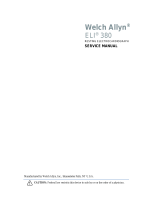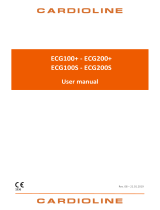
TABLE OF CONTENTS
xix
INTRODUCTION SECTION 1
Manual Purpose ............................................................................................................................................................. 1
Audience ........................................................................................................................................................................ 1
Indications for Use ........................................................................................................................................................ 1
System Description ........................................................................................................................................................ 2
Figure 1-1, ELI 230 System Illustration ........................................................................................................................ 3
Figure 1-2, ELI 230 Left Side ....................................................................................................................................... 4
Figure 1-3, ELI 230 Rear............................................................................................................................................... 4
Figure 1-4, ELI 230 Base .............................................................................................................................................. 5
Figure 1-5, ELI 230 Display Overview ......................................................................................................................... 6
Function Keys .................................................................................................................................................. 6
Specifications ................................................................................................................................................................ 8
Accessories .................................................................................................................................................................... 9
Replacement Lead Sets and Accessories ....................................................................................................................... 9
Electrodes .................................................................................................................................................................... 10
EQUIPMENT PREPARATION SECTION 2
Connecting the Acquisition Module ............................................................................................................................ 11
Loading Paper .............................................................................................................................................................. 12
Applying Power ........................................................................................................................................................... 13
Setting Date and Time ................................................................................................................................................. 14
Using the AM12 Acquisition Module ......................................................................................................................... 14
Using the WAM (Wireless Acquisition Module) ........................................................................................................ 14
Indications for Use (WAM) .......................................................................................................................... 14
WAM with Lead Wires ............................................................................................................................... 15
Using the Buttons ......................................................................................................................................... 15
Approved Battery Models ............................................................................................................................ 15
WAM Specifications .................................................................................................................................... 16
Battery Installation........................................................................................................................................ 17
Applying Power ............................................................................................................................................ 17
Attaching the Lead Wire Connector Block .................................................................................................. 17
Labeling the WAM and Electrocardiograph ................................................................................................. 17
Pairing the WAM with ELI 230 ................................................................................................................... 18
Lead Fail ....................................................................................................................................................... 18
LED Indicators ............................................................................................................................................. 18
Cleaning the WAM and ECG Lead Wires .................................................................................................................. 19
Periodic Maintenance ................................................................................................................................... 19
Disposal of Waste Materials ......................................................................................................................... 19
Serial and Part Number Location ................................................................................................................................ 19
























